Dog Grooming
Top 10 Perks of Bringing Home a Shelter Dog
Bringing home a shelter dog offers numerous advantages beyond the fulfillment of providing a loving home to a deserving animal. This decision not only positively impacts the life of the adopted dog but also enriches the lives of the adoptive family.
From cost-effective pet adoption to the joy of embracing a unique breed, shelter dogs bring an array of benefits. Their companionship, unconditional love, and the opportunity for behavior and training benefits contribute to the well-being of both the dog and the owner.
Furthermore, the health benefits for owners and the life-saving impact of shelter adoption underscore the significance of this choice.
In this article, we will explore the top 10 perks of bringing home a shelter dog.
Cost-Effective Pet Adoption
Cost-effective pet adoption provides an affordable opportunity for individuals and families to bring a loving companion into their home while also supporting animal shelters and rescue organizations.
The adoption process at shelters often includes various services such as vaccinations, spaying or neutering, and microchipping, which can be costly if obtained independently. By choosing to adopt, individuals can save on these initial pet expenses.
Additionally, the adoption fees at shelters are considerably lower than the cost of purchasing a pet from a breeder or a store. This makes pet adoption an economical choice for those looking to add a furry friend to their family.


Furthermore, the joy and fulfillment that comes from providing a forever home to a shelter pet far outweigh any financial savings.
Companionship and Unconditional Love
Bringing a shelter dog into your home means welcoming a lifelong loyal friend who will provide endless affectionate bonds.
The unconditional love and companionship a shelter dog offers can be a source of comfort and joy, creating a deep and meaningful connection that enriches both your life and the dog’s.
The rewards of this bond extend far beyond the initial act of adoption, fostering a relationship that grows and strengthens over time.
Lifelong Loyal Friend
A shelter dog provides unwavering companionship and unconditional love, enriching the lives of their owners in profound ways. These loyal companions often form lifelong friendships with their human counterparts.
The unwavering loyalty of a shelter dog is unmatched, creating a deep bond that brings immeasurable joy and comfort. Their unconditional love knows no bounds, offering solace during both the brightest and darkest moments of life. The presence of a shelter dog brings a sense of security and emotional support, fostering a strong, enduring connection.
Their innate ability to empathize and provide unwavering support makes them invaluable lifelong friends. Through their constant companionship and unwavering devotion, shelter dogs become cherished members of the family, offering love and loyalty that knows no limits.
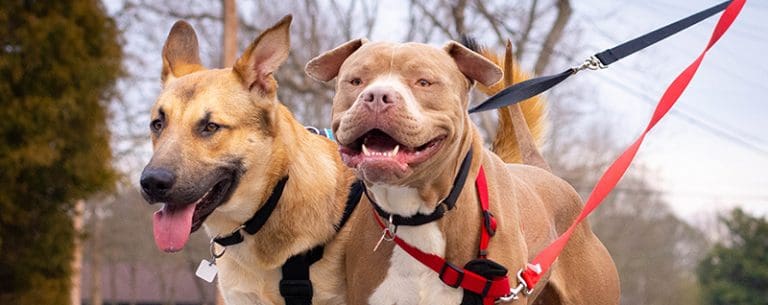

Endless Affectionate Bond
With their endless affectionate bond, shelter dogs offer unparalleled companionship and unconditional love to their owners, enriching their lives in countless ways. The loving bond that develops between a shelter dog and its owner is truly heartwarming and can bring immense joy and comfort. Here are some endearing behaviors and benefits that come with this loving bond:
- Unconditional Love: Shelter dogs have an incredible capacity for unconditional love, providing constant support and affection to their owners.
- Companionship: They offer unwavering companionship, always being there to lift spirits and offer comfort during both good and challenging times.
- Emotional Healing: The presence of a shelter dog can have a therapeutic effect, reducing stress and anxiety while promoting emotional well-being.
- Lifelong Friendship: A shelter dog’s loving bond often results in a lifelong friendship, creating cherished memories and experiences that can last a lifetime.
Behavior and Training Benefits
Bringing a shelter dog into your home can be a transformative experience. Shelter dogs often display remarkable resilience, bouncing back from past hardships with a remarkable spirit. Their stories of successful training and behavioral improvement inspire us to see the potential in every dog, regardless of their background.
Especially when it comes to behavior and training benefits.
Shelter Dogs’ Resilience
Shelter dogs demonstrate remarkable resilience, which can offer behavior and training benefits to their new owners. Their adaptability and ability to overcome challenges make them valuable companions. Here are some ways in which the resilience of shelter dogs can benefit their new owners:
- Emotional Support: Resilient shelter dogs can provide emotional support to their owners, helping them navigate through difficult times.
- Training Flexibility: Their resilience often translates to a willingness to learn and adapt, making them more receptive to training.
- Bonding Opportunities: Overcoming past hardships can lead to a strong bond between the dog and its new owner, fostering a sense of trust and loyalty.
- Positive Influence: Their resilience can inspire their owners to face their own challenges with courage and determination.
Training Success Stories
The behavior and training benefits of shelter dogs are evidenced through numerous training success stories, showcasing their adaptability and willingness to learn.
Positive reinforcement techniques have been instrumental in shaping the behavior of these dogs, emphasizing rewards for desired actions and creating a positive training environment.
Clicker training, a form of positive reinforcement, has been particularly effective in teaching shelter dogs new behaviors and commands. Through the use of a clicker to mark desired behavior and reward it with a treat, shelter dogs have shown remarkable progress in learning obedience and new skills.


These training success stories not only demonstrate the potential of shelter dogs to thrive in a loving home but also serve as a testament to their resilience and capacity for learning, inspiring potential adopters to consider the untapped potential of these remarkable animals.
Health Benefits for Owners and Dogs
Owning a shelter dog can provide both owners and their pets with numerous health benefits, ranging from physical activity to mental well-being. Here are some of the ways in which bringing home a shelter dog can improve the health of both the owner and the pet:
- Increased Physical Activity: Owning a dog encourages regular walks and outdoor activities, which can lead to improved cardiovascular health and weight management for both the owner and the dog.
- Mental Well-being: The companionship of a shelter dog can reduce stress, anxiety, and depression in owners, while the love and care provided by the owner can improve the mental health of the dog.
- Lowered Blood Pressure: Interactions with dogs have been shown to lower blood pressure and reduce the risk of heart disease in owners.
- Boosted Immunity: Studies suggest that children growing up with dogs may have stronger immune systems and a reduced risk of allergies.
Life-Saving Impact of Shelter Adoption
Bringing home a shelter dog can truly transform lives, as the act of adopting provides a life-saving opportunity for these animals in need. The life-changing impact of shelter adoption goes beyond the individual dog; it extends to the entire shelter community.
Every adoption creates space for another animal in need, potentially saving another life. Heartwarming success stories abound, showcasing the remarkable transformations shelter dogs undergo once they find their forever homes. These stories inspire others to consider adoption and experience the profound joy of giving a second chance to a deserving animal.
The life-saving impact of shelter adoption cannot be overstated, as it not only saves the life of the adopted dog but also creates a ripple effect that saves countless others, making it a deeply rewarding and impactful choice for prospective pet owners.
Social Impact and Community Benefits
Adopting a shelter dog not only brings joy to the individual or family, but also has a positive impact on the broader community. Here are some ways in which bringing a shelter dog into your home can benefit the community:
- Community Engagement: Owning a shelter dog encourages community members to engage with one another, creating a network of support and camaraderie.
- Volunteer Opportunities: It opens up volunteer opportunities for individuals to support local shelters and rescue organizations, fostering a sense of unity and compassion within the community.
- Positive Public Image: By adopting a shelter dog, individuals set an example for others, promoting the idea of compassion and responsible pet ownership within the community.
- Reduced Strain on Resources: Adopting from a shelter helps alleviate the burden on animal control services and shelters, allowing them to focus on rescuing and rehabilitating more animals.
Discovering Unique Breeds and Personalities
Upon welcoming a shelter dog into your home, you will uncover a diverse array of breeds and personalities that may surprise and delight you. Unique breed exploration is one of the most exciting aspects of adopting a shelter dog.


From charming mixed breeds to lesser-known purebreds, each dog brings a blend of traits that make them one-of-a-kind. Additionally, the process of personality compatibility assessment becomes an enriching experience. Understanding a shelter dog’s unique personality and characteristics allows for a deeper connection and a more fulfilling companionship.
It’s an opportunity to appreciate the distinct qualities and quirks that make each shelter dog special. Whether you’re drawn to a specific breed or open to the unexpected, the journey of discovering these unique breeds and personalities is a rewarding and heartwarming adventure.
Post-Adoption Support and Training
The process of welcoming a shelter dog into your home includes access to valuable post-adoption support and training resources to ensure a smooth transition and successful integration of your new companion into your household. This support is crucial for both the dog and the owner and can make a significant difference in the overall success of the adoption.
Here are some essential aspects of post-adoption support and training:
- Post-Adoption Counseling: Many shelters offer counseling services to help you navigate any challenges that may arise after bringing your new dog home.
- Behavior Modification: Access to professional trainers who can assist with behavior modification to address any issues, such as anxiety or aggression.
- Training Resources: Shelters often provide access to training classes, materials, and workshops to help you train your new dog effectively.
- Support Network: Being part of a community of fellow dog owners and shelter staff provides ongoing support, advice, and encouragement.
The Unconditional Love of Shelter Dogs
Bringing home a shelter dog means opening your heart to a lifetime of unconditional love. Their loyalty knows no bounds, and they have an innate ability to provide comfort and healing in times of need.
Shelter dogs have a remarkable way of becoming unwavering companions, standing by your side through every joy and challenge.
Shelter Dogs’ Loyalty
When considering the loyalty of shelter dogs, it is evident that their unconditional love and devotion make them exceptional companions. Shelter dogs form deep trusting relationships with their owners, providing unwavering emotional support. Their loyalty goes beyond mere companionship, creating a profound human-canine connection that enriches the lives of their adoptive families.


Here are four reasons why the loyalty of shelter dogs is unparalleled:
- Unwavering Devotion: Shelter dogs often show remarkable loyalty to their owners, forming deep emotional bonds and offering constant support.
- Faithful Companionship: They provide a sense of security and comfort, fostering trusting relationships that can positively impact the well-being of their owners.
- Constant Support: Their unwavering loyalty offers emotional stability, helping individuals navigate life’s challenges with a steadfast companion by their side.
- Endless Affection: Shelter dogs express their loyalty through endless displays of affection, making every day brighter for their human companions.
Healing Power of Dogs
Their unconditional love and unwavering loyalty make shelter dogs powerful sources of healing for individuals in need of emotional support. Studies have shown that the presence of a dog can have a calming effect on people, reducing stress, anxiety, and even blood pressure. This healing therapy is particularly beneficial for those struggling with emotional trauma, depression, or other mental health challenges.
Shelter dogs, in particular, bring an additional layer of healing power as they often have their own stories of resilience and overcoming adversity, which can inspire and uplift their new owners. The emotional support provided by these dogs goes beyond simple companionship, offering a unique bond that fosters a sense of security and comfort.
The unwavering love and acceptance of a shelter dog can truly work wonders in healing the hearts and minds of those in need.
Unwavering Companionship From Dogs
Experiencing the unwavering companionship and unconditional love of shelter dogs can profoundly impact individuals in need of emotional support. The bond formed with a shelter dog can provide immense comfort and stability, offering a source of solace during challenging times.
The following benefits highlight the invaluable support and love that shelter dogs can provide:
- Canine Therapy: Shelter dogs have a remarkable ability to sense emotions and provide comfort, making them excellent companions for individuals seeking emotional support.
- Unconditional Love: Shelter dogs offer unwavering loyalty and affection, promoting mental well-being and reducing feelings of loneliness.
- Emotional Stability: The presence of a shelter dog can bring a sense of calm and emotional stability, aiding in anxiety and stress reduction.
- Companionship: The companionship of a shelter dog can alleviate feelings of isolation, fostering a sense of purpose and connection.
The unwavering companionship and unconditional love of shelter dogs play a vital role in enhancing mental health and emotional well-being.
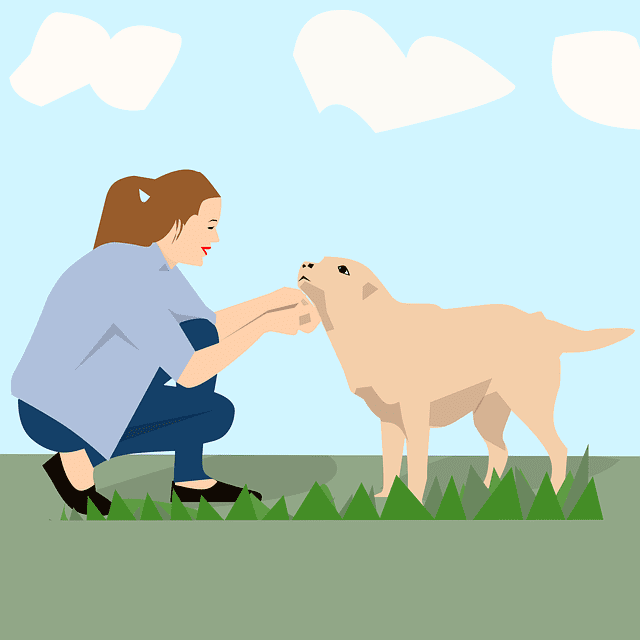

Embracing the Joy of Shelter Adoption
Embracing shelter adoption brings a sense of fulfillment and joy to both the adopter and the dog. Adoption success stories and heartwarming experiences abound, showcasing the incredible bond that forms between shelter dogs and their new families. The act of giving a shelter dog a second chance at life is not only rewarding on a personal level but also contributes to the larger community outreach efforts aimed at promoting shelter adoption.
The joy of welcoming a shelter dog into your home goes beyond the initial act of adoption. It extends into the daily moments of love, gratitude, and companionship shared with your new furry friend. As you witness the transformation and resilience of a shelter dog, you become part of a heartwarming narrative that inspires others to consider shelter adoption as well.
Frequently Asked Questions
Can Shelter Dogs Be Trained to Be Good With Children and Other Pets?
Shelter dogs can be trained to be good with children and other pets through positive reinforcement, socialization techniques, and addressing behavioral issues. Introducing pets gradually and using proven training methods can help create a harmonious environment for all.
Are There Any Specific Health Concerns to Consider When Adopting a Shelter Dog?
When considering adopting a shelter dog, it’s important to be mindful of potential health considerations and behavioral challenges. Prioritize a thorough vet check-up to address any existing health issues and consult with professionals to manage any behavioral challenges that may arise.
How Can I Help My Shelter Dog Adjust to Their New Home and Environment?
When bringing a shelter dog home, crate training and gradual socialization are crucial. Use positive reinforcement and patience to help them adjust. Allow them to explore at their own pace and provide a calm, secure environment.
Are There Any Resources Available for Post-Adoption Support and Training for Shelter Dogs?
Post-adoption support for shelter dogs is crucial. Many organizations offer resources such as training classes, behavior consultations, and support groups. These programs help owners navigate challenges and provide the necessary tools for a successful transition.
What Are Some Ways to Help My Shelter Dog Feel Safe and Secure in Their New Environment?
To help your shelter dog feel safe and secure in their new environment, consider bonding activities like daily walks and interactive play. Creating a safe space with a comfortable bed and toys can provide a sense of security.






Hello, My Dog-Loving Friends! I’m Jason Brown, a social media marketer for Dog Training Schools and a writer at BestDogTraining.com. My world is all about the joy and wisdom our four-legged friends bring. I love the exchange of learning with dogs; it’s not just my job. It’s my way of life.
My journey began at Ohio State with a degree in journalism, fueling my passion for storytelling. This passion comes alive in every post and article I write, whether about the latest dog training techniques or heartwarming canine tales.
When I’m not immersed in the world of dogs, you can find me surfing. There’s a thrilling similarity between the unpredictability of the ocean and working with animals – both are endlessly fascinating. I’m also an aspiring poet, although I embrace the more humorous side of my attempts at verse.
Traveling is another passion of mine. My wife, kids, and I explore new places, always accompanied by our Basset Hound, Snoopy. He’s more than a pet; he’s integral to our family adventures.
Through my work, hobbies, and travels, I’ve discovered that life’s most fulfilling experiences come from sharing moments with family, friends, and a loyal dog. Follow me for stories and tips from a life enriched by dogs, the ocean, and family adventures! 🐕🌊👨👩👧👦
Dog Grooming
Professional Dog Grooming Tips: How to Keep Your Pup Looking and Feeling Great
Dog grooming is an essential aspect of pet care. Every dog owner should have basic knowledge of it. While some may opt for professional grooming services, not everyone can afford it.
Therefore, professionals from around the country have shared their top dog grooming tips and tricks. With these expert tips, dog owners can learn how to groom their pets at home, saving both time and money.
From nail trimming to extensive coat grooming, these tips are designed to make the process easier and more effective.
12 Professional Dog Grooming Tips
Keeping your dog clean and well-groomed is essential to their overall health and happiness. Here are 12 professional dog grooming tips to help you achieve a clean and pretty coat for your furry friend.
Routine
Developing a routine that works for both you and your dog is crucial. Use the same shampoo, bathing spot, and steps every time to make it easier on you and less stressful for your dog.
Make sure to clean every part of their body, including the belly and face, and rinse thoroughly to avoid any shampoo residue left on the skin or in the coat.
Choose the Shampoo
There are a variety of canine shampoos available, and what you choose will be based on your needs.
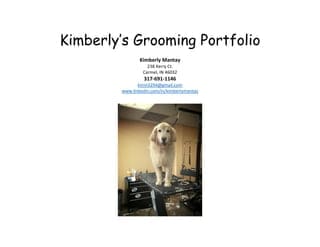

For example, for dry skin, try an oatmeal-based shampoo. Puppies need special shampoo that won’t make them tear up, so make it more comfortable with a tearless puppy shampoo. In general, oatmeal-based shampoos are usually the best basic option.
Additionally, conditioners can be used if your dog has dry or sensitive skin, and dry or brittle hair. It also can help reduce matting.
Deshedding/Dematting
Take a comb or brush and work through the coat as you’re rinsing to rid your dog of excess loose hair and to detangle any mats that they’ve developed. You’ll find it easier to do this during the bathing routine, rather than when you’re trying to dry them.
Grooming Equipment
One highly recommended professional dog grooming tip is not to skimp on the tools you’ll need (brushes, scissors, trimmers).
Not only will they last longer, but they will work better than their cheaper cousins. Make sure that you clean your equipment after every use and lubricate and sharpen as necessary to prolong the life of the tool.
Organize Your Equipment
Having everything in one place — shampoo, combs, brushes, scissors, trimmers, etc. — will keep the process moving along. There’s nothing like an anxious dog making its escape while you search for the right pair of scissors.
Get a Helping Hand
Many dogs will not sit still for drying and trimming, so you might need a little help.
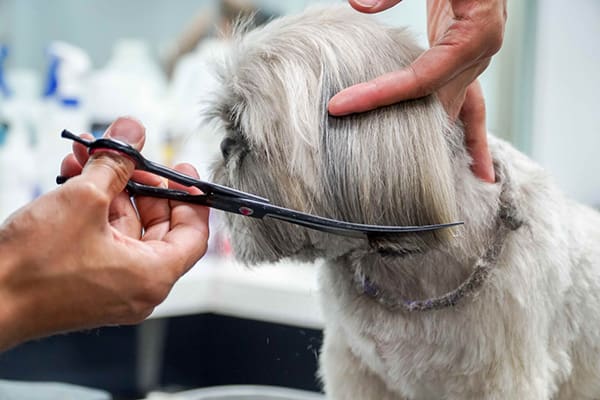

One dog-grooming trick is to use a Groomers Helper device to stabilize your dog and keep him from struggling, biting, or spinning. It will actually make your job go by all that much faster, a relief for the dog as well. If equipment isn’t in your budget, ask a family member or friend your pet is comfortable with to lend a helping hand.
Dry Before Grooming
Make sure that you thoroughly dry your dog before grooming. Partially dried coats will tend to curl more, making it difficult to get an even trim. This way you can do one pass with the clippers, rather than two.
Clippers 101
If you’ll be trimming your dog’s coat, you will need a pair of clippers and one or more blades.
Blades are numbered differently than human clipper blades, where 1 is the shortest. To keep your dog’s coat longer, use a #5/8, #3, or #4. For a shorter cut, go with #5, #7, #9, or #10.
Make sure that your blade is a finish-cut or FC version. The teeth are spaced a bit farther apart and the blades aren’t as sharp as a skip-tooth blade, which should be reserved for pro groomers. Also, for armpits, around eyes and in the sanitary area, use only a #10 blade.
Grooming Made Easy
Always go with the lay of the hair when trimming. Keep the tip of your blade down against the skin, holding the back at an angle. Then pull the skin taut as you move your trimmer along the coat (to avoid cutting the skin).
Trimming Paws
If you need to trim between the pads or around the edge of the paws, one of the simplest dog grooming tips is to move your dog to the edge of the work surface, so it makes it easier for you to get to.


Right Tool for Trimming Nails
There are a variety of clippers available, from electric dremel-style tools to scissor and guillotine styles.
There is no need to invest in an electric dremel nail grinder. It is more expensive than the other styles and the noise can be off-putting to your dog, who probably isn’t fond of the procedure to begin with.
How to Trim the Nails
Start with the back paws, as they tend to be less sensitive. Hold the paw firmly in your hand. Cut the end off the nail, below the quick, at a 45-degree angle. You can choose to take several small cuts or one larger cut, but be very careful.
Frequently Asked Questions
What tools are essential for professional dog grooming?
Professional dog grooming requires a variety of tools to ensure that the dog is groomed properly. Some essential tools include:
-
Clippers: Clippers are used to trim the dog’s fur to the desired length. It’s important to use clippers that are designed for dogs and to choose the right blade for the dog’s coat type.
-
Scissors: Scissors are used to trim the dog’s fur in areas that are hard to reach with clippers, such as around the ears and paws.
-
Brushes and combs: Brushes and combs are used to remove tangles and mats from the dog’s fur. It’s important to choose the right brush for the dog’s coat type.


-
Nail clippers: Nail clippers are used to trim the dog’s nails. It’s important to use nail clippers that are designed for dogs and to avoid cutting the quick.
What are some effective techniques for beginners starting dog grooming at home?
For beginners starting dog grooming at home, it’s important to start slowly and to be patient with the dog.
Some effective techniques include:
-
Brushing the dog’s fur regularly to prevent tangles and mats.
-
Trimming the dog’s nails regularly to prevent them from becoming too long.
-
Bathing the dog with a gentle dog shampoo to keep the coat clean and healthy.
-
Using clippers and scissors to trim the dog’s fur to the desired length.



Can you describe a daily grooming routine to maintain a dog’s coat health?
To maintain a dog’s coat health, it’s important to establish a daily grooming routine. A typical daily grooming routine may include:
-
Brushing the dog’s fur to remove tangles and mats.
-
Checking the dog’s ears for dirt and debris.
-
Cleaning the dog’s teeth with a dog-specific toothbrush and toothpaste.
-
Checking the dog’s eyes for any signs of irritation or infection.
-
Wiping the dog’s paws to remove any dirt or debris.
What steps should be followed for a complete professional dog grooming session?
A complete professional dog grooming session typically includes the following steps:


-
Brushing the dog’s fur to remove tangles and mats.
-
Bathing the dog with a gentle dog shampoo to clean the coat.
-
Drying the dog’s coat with a towel or blow dryer.
-
Trimming the dog’s nails to the desired length.
-
Using clippers and scissors to trim the dog’s fur to the desired length.



-
Cleaning the dog’s ears and teeth.
How can I groom my dog at home using clippers safely and effectively?
To groom your dog at home using clippers safely and effectively, it’s important to follow these steps:


-
Choose the right clippers for your dog’s coat type.
-
Choose the right blade for the desired length of fur.
-
Start slowly and work in small sections.
-
Keep the clippers clean and well-maintained.
-
Use caution when grooming sensitive areas, such as around the ears and paws.
What is the proper etiquette for tipping a dog groomer after the service?
Tipping a dog groomer is a common practice. The amount of the tip can vary depending on the quality of the service and the location. In general, a tip of 15-20% of the service cost is appropriate.
It’s also important to consider the groomer’s level of experience and the difficulty of the job when deciding on the tip amount.
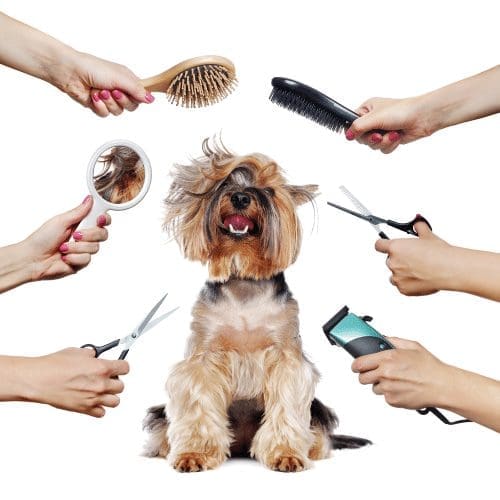





Hello, My Dog-Loving Friends! I’m Jason Brown, a social media marketer for Dog Training Schools and a writer at BestDogTraining.com. My world is all about the joy and wisdom our four-legged friends bring. I love the exchange of learning with dogs; it’s not just my job. It’s my way of life.
My journey began at Ohio State with a degree in journalism, fueling my passion for storytelling. This passion comes alive in every post and article I write, whether about the latest dog training techniques or heartwarming canine tales.
When I’m not immersed in the world of dogs, you can find me surfing. There’s a thrilling similarity between the unpredictability of the ocean and working with animals – both are endlessly fascinating. I’m also an aspiring poet, although I embrace the more humorous side of my attempts at verse.
Traveling is another passion of mine. My wife, kids, and I explore new places, always accompanied by our Basset Hound, Snoopy. He’s more than a pet; he’s integral to our family adventures.
Through my work, hobbies, and travels, I’ve discovered that life’s most fulfilling experiences come from sharing moments with family, friends, and a loyal dog. Follow me for stories and tips from a life enriched by dogs, the ocean, and family adventures! 🐕🌊👨👩👧👦
Dog Grooming
Best Training Tips for Working Dogs
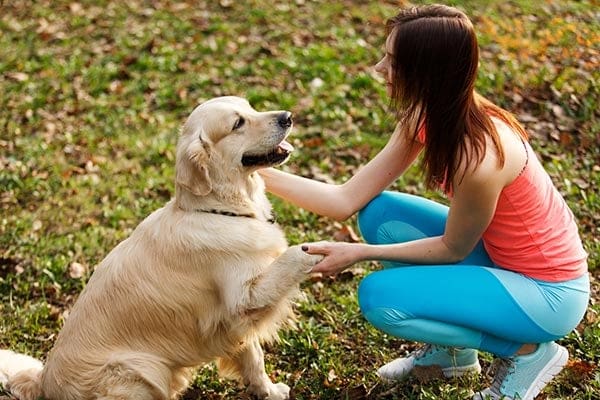

Working dogs are crucial in various fields, from law enforcement to search and rescue. But what does it take to train these hardworking canines?
In this article, we’ll explore the different types of working dogs, the importance of training, the benefits, and the basic commands every working dog should know. We’ll also discuss the best methods for training these dogs and the challenges that come with it.
Whether you’re a professional handler or simply a dog lover, this article will provide valuable insights into working dog training.
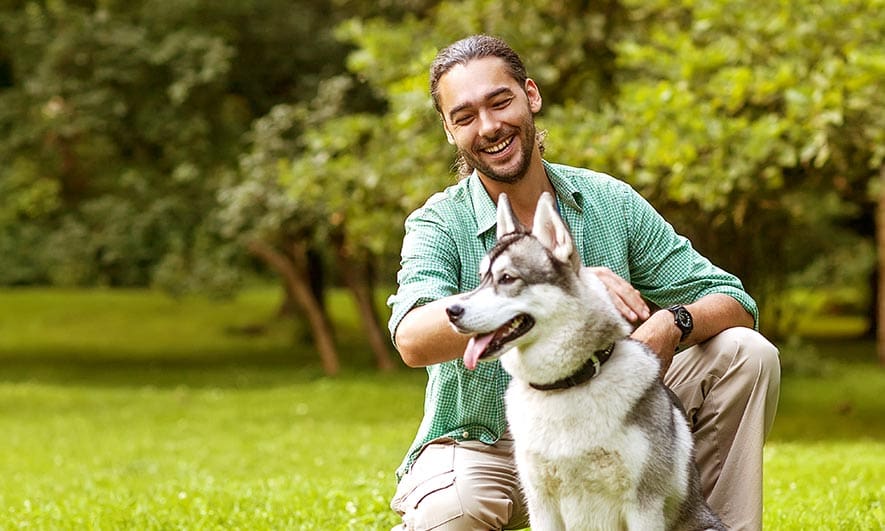

Key Takeaways:
What Are Working Dogs?
Working dogs are specially trained canines performing various tasks and duties to assist and support humans in various fields, ranging from security and protection to healthcare and research.
These skilled animals come in various breeds, each with unique traits and aptitudes tailored to specific roles. From German Shepherds excelling in police work to Labrador Retrievers aiding individuals with disabilities, the diversity in their functions is remarkable.
Training methods are key in harnessing their potential, encompassing obedience, scent detection, and agility training. Careful consideration of health and fitness is vital, ensuring that these remarkable canines are well-prepared for the demanding nature of their work. Their contributions across domains like search and rescue, therapy, and agriculture are invaluable, underscoring their significance in society.
What Are The Different Types Of Working Dogs?
Working dogs encompass a wide spectrum of specialized roles, including service, therapy, search and rescue, detection, and many others, each tailored to address specific human needs and societal challenges.
Service dogs are specially trained to assist individuals with disabilities. This includes guide dogs for the visually impaired and hearing dogs for those who are deaf or hard of hearing.
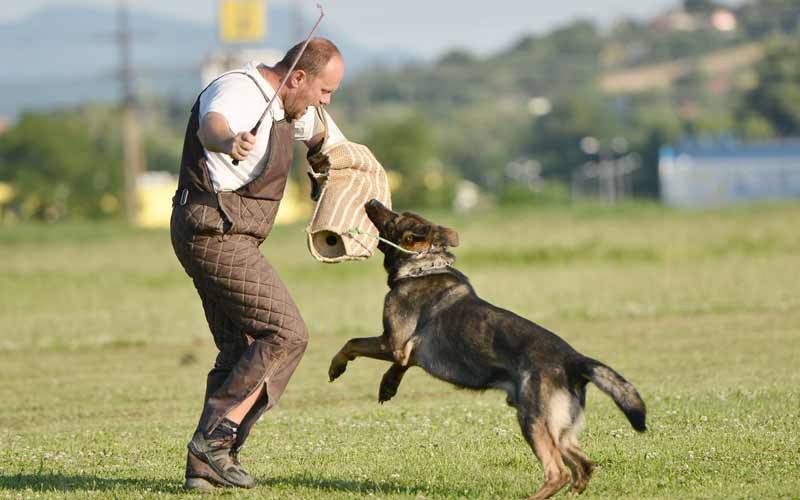

Therapy dogs provide comfort, affection, and support in various settings, such as hospitals, nursing homes, schools, and disaster areas. They offer emotional relief to people in distress.
Search and rescue dogs are trained to locate missing individuals in natural disasters or wilderness environments. They use their keen sense of smell and agility to save lives.
Why Is Training Important For Working Dogs?
Training holds immense significance for working dogs as it cultivates essential skills, behaviors, and obedience required to execute their designated tasks effectively and reliably.
Without training, working dogs could not perform tasks such as search and rescue, detection, herding, or support for individuals with disabilities.
Through carefully structured training programs, dogs can learn to respond to commands, adapt to various environments, and remain focused on their duties even in challenging situations.
What Are The Benefits Of Training For Working Dogs?
Training working dogs enhances their obedience and skills and fosters a deep, trusting relationship between the dogs and their handlers, leading to heightened efficiency and effectiveness in their designated tasks.
By actively engaging in training exercises, dogs learn to respond to commands promptly, ensuring that they perform their duties with precision and reliability.
Training allows these diligent animals to develop specialized skills, such as scent detection, search and rescue techniques, and herding capabilities, enabling them to fulfill their roles with utmost proficiency.
As the bond between a dog and its handler strengthens through consistent training, the level of trust and understanding deepens. This mutual trust results in improved communication and teamwork and cultivates a sense of loyalty and dedication in the dogs, making them even more alert, focused, and responsive to their handlers’ instructions and cues.
What Are The Basic Commands For Working Dogs?
Working dogs are trained to respond to fundamental commands, including ‘sit,’ ‘stay,’ ‘come,’ ‘heel,’ ‘leave it,’ and ‘down,’ each serving as crucial building blocks in their training and operational effectiveness.
These commands are essential for establishing control over the dogs and ensuring they can perform their duties effectively.
Obedience is a key aspect of their training, as it allows handlers to manage potential risks and guarantee reliable behavior in various situations.
Reinforcement of these commands through consistent training and positive rewards is vital for their continued responsiveness in their roles, whether it’s for search and rescue, police work, or aiding individuals with disabilities.
Sit
The sit command forms a foundational element in training working dogs, teaching them to assume a seated position on cue, showcasing their responsiveness and discipline.
This command is essential for obedience and safety, whether the dog is navigating busy city streets, participating in dog sports, or simply interacting with friends and family.
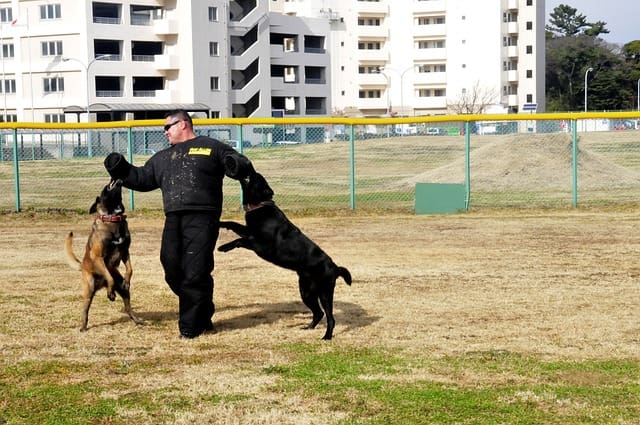

To execute the command, the trainer typically uses a treat or a toy to lure the dog into sitting, repeating the word ‘sit’ as the cue.
Once the dog complies, positive reinforcement, such as verbal praise or additional treats, is crucial to strengthen their understanding and compliance with the command.
Consistency and patience are key in reinforcing the ‘sit’ command, ensuring the dog learns to respond reliably in various environments and situations.
Stay
The stay command is pivotal in training working dogs, requiring them to maintain their position without movement until released, showcasing their discipline and attentiveness to their handler’s instructions.
It demonstrates the discipline and obedience essential for working dogs to perform their tasks effectively.


The ‘stay’ command ensures that the dog remains in place and teaches them self-control and patience. It is a skill that is particularly valuable in various working environments, such as search and rescue, police, and therapy dogs.
Positive reinforcement techniques are commonly utilized to train a dog in the ‘stay’ command. Handlers use treats, praise, and consistent practice to reinforce the desired behavior.
Gradually increasing the duration and distance of the ‘stay’ and introducing distractions help the dog to master this command. Making the training sessions fun and rewarding for the dog is essential, as well as building a positive association with the ‘stay’ command.
Come
The ‘come’ command is essential to working dog training, teaching them to respond promptly and return to their handler upon hearing the cue, highlighting their responsiveness and reliable obedience.
Training the ‘come’ command involves establishing a strong recall by using positive reinforcement and consistent practice sessions.
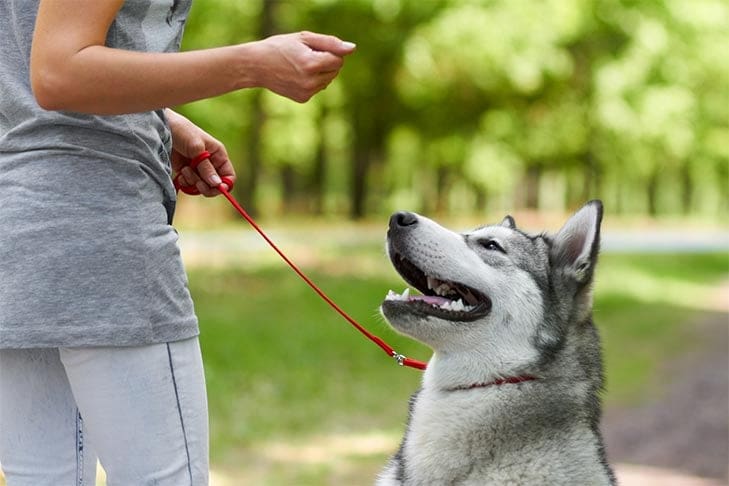

Handlers often start by using a long lead to gently guide the dog back as they say ‘come’, gradually reducing the distance and eventually transitioning to off-leash practice.
Creating a positive association with the command through rewards and praise is crucial, reinforcing the desired behavior.
Consistency and patience are key when implementing the ‘come’ command, which requires the dog’s full attention and understanding.
Incorporating real-life scenarios and distractions during training sessions helps solidify the recall response, ensuring the dog reliably comes when called.
Heel
The heel command is integral in the training of working dogs, requiring them to walk closely alongside their handler without pulling or straying, exhibiting their discipline and attentiveness during movement.
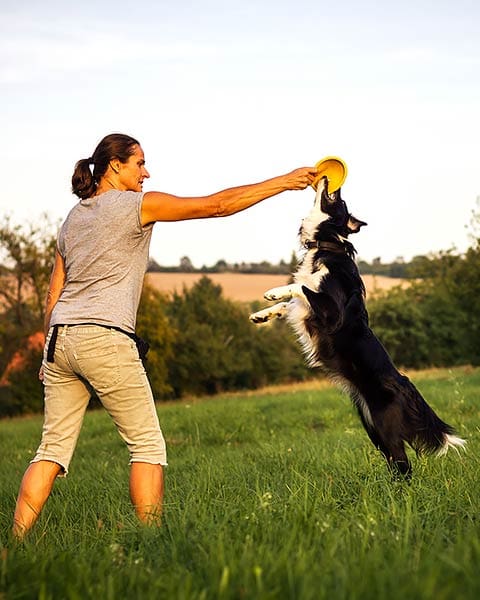

When a working dog masters the ‘heel’ command, it can effectively perform various tasks such as search and rescue, herding, protection, and assistance.
By teaching a dog to ‘heel’, the handler can maintain control in varied environments, ensuring safety and preventing the dog from getting distracted or wandering off in potentially hazardous situations. Reinforcement techniques, such as positive rewards and consistent training, are crucial in imprinting the ‘heel’ command in a working dog’s behavior, fostering a strong bond between the handler and the canine companion.
Leave It
The ‘leave it’ command is crucial for working dogs, instructing them to refrain from engaging with or consuming specific items or substances, showcasing their self-control and obedience to their handler’s directives.
During training, mastering the ‘leave it’ command involves a combination of discipline and positive reinforcement. Handlers use reward-based techniques, such as treats or verbal praise, to reinforce the desired behavior.
This command is particularly significant when working dogs encounter hazardous or distracting items, such as service dogs in public spaces. It fosters the important trait of self-control in these dogs, enabling them to focus on their duties without succumbing to temptations.
Down
The ‘down’ command is fundamental in training working dogs, requiring them to assume a lying down position, showcasing their responsiveness and ability to follow their handler’s cues.
When training a working dog to ‘down’, it’s essential to ensure consistent execution to reinforce their understanding of the command. This can involve verbal and physical cues to communicate the desired action.
Positive reinforcement, such as treats or verbal praise, is commonly used to encourage and reward the correct response. Through consistent practice and reinforcement, working dogs become adept at responding to the ‘down’ command in various environments and situations.
Incorporating this training into practical applications, such as search and rescue operations or police work, highlights the vital role of the ‘down’ command in maximizing a working dog’s capabilities.
How To Train Working Dogs?
Training working dogs requires a systematic approach that starts early, utilizes positive reinforcement, maintains consistency, and employs appropriate training methods tailored to their needs and roles.
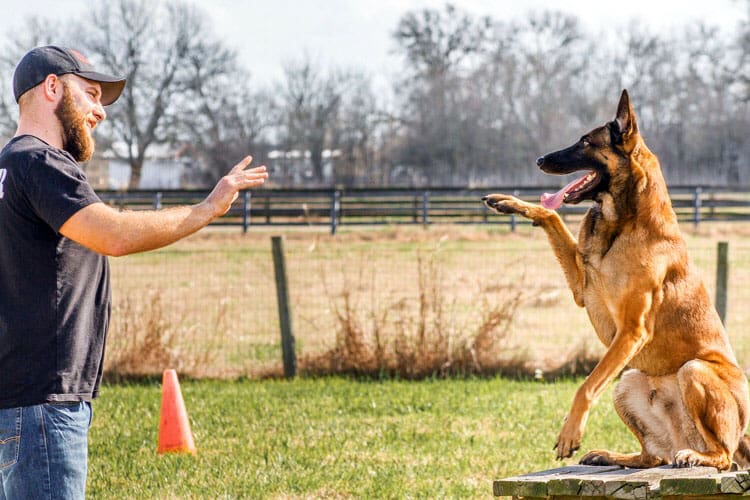

Early initiation is essential for working dogs as it sets the foundation for their roles and responsibilities. Positive reinforcement, such as treats, toys, and praise, helps to reinforce desired behaviors and strengthen the bond between the dog and the handler.
Consistency is key in establishing clear expectations and preventing confusion. Specialized training methods, like scent detection for search and rescue dogs or agility training for police K9 units, enable the dogs to develop the specific skills necessary for their tasks.
Start Training Early
Training at an early stage is pivotal for working dogs, as it establishes a strong foundation for learning, behavior shaping, and skill development, ensuring their readiness for their designated tasks.
Early training for working dogs is crucial for inculcating essential behaviors and honing the required skills. By training early, dogs can grasp commands, socialize, and develop critical problem-solving abilities more effectively. This early initiation also fosters a deeper connection between the handler and the dog, leading to better communication and understanding.
Working on mental stimulation and physical conditioning during early training can significantly impact the dog’s performance in their designated tasks. It sets the stage for a fulfilling and successful career in various working roles in service, protection, or search and rescue.
Use Positive Reinforcement
Employing positive reinforcement techniques in training working dogs fosters a conducive learning environment where desired behaviors are rewarded, shaping their responses and ensuring their sustained motivation and engagement.
This approach creates a positive association between the behavior and the reward, strengthening the likelihood of its repetition.
It also cultivates a strong bond between the trainer and the dog, fostering mutual trust and cooperation.
When working dogs experience the benefits of positive reinforcement, they demonstrate enhanced focus and willingness to carry out tasks, leading to improved performance and overall effectiveness in their designated roles.
Be Consistent
Consistency in training practices is paramount for working dogs, as it reinforces learned behaviors, establishes clear expectations, and ensures a harmonized approach across different training sessions and environments.
Consistency provides structure for the dogs and strengthens their understanding of commands and desired behavior.
The dogs learn to associate specific cues with expected responses by consistently reinforcing desired actions and behaviors. This approach helps to set clear expectations and boundaries, fostering a positive learning environment.
Use Appropriate Training Methods
Tailoring training methods to align with working dogs’ specific needs and roles is essential for maximizing their learning potential, behavioral development, and operational readiness in their designated tasks.
Understanding each working dog’s unique abilities and characteristics is crucial in customizing their training approach. By recognizing their strengths and weaknesses, trainers can adapt their methods to address individual behavioral patterns and learning styles.
This personalized approach greatly enhances the dog’s ability to grasp and execute complex tasks precisely and efficiently. Tailored training methods also contribute to working dogs’ well-being and mental stimulation, fostering a positive and rewarding training experience. This individualized attention ensures that the dogs are not only prepared for their specific roles, but also nurtured in a way that supports their overall development and happiness.
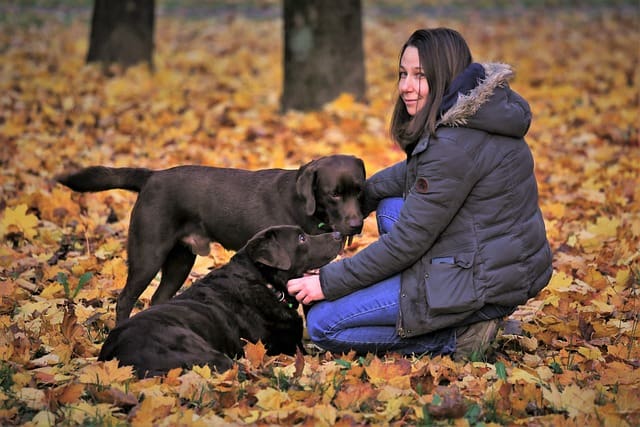

What Are The Challenges Of Training Working Dogs?
Training working dogs presents various challenges, including managing their high energy levels, mitigating distractions, addressing breed-specific needs, and accommodating potential physical limitations to ensure effective training outcomes.
Breeds such as Border Collies and Australian Shepherds are known for their high energy levels, making it essential to provide ample physical and mental stimulation.
Proper management of distractions during training sessions, like using controlled environments and gradual exposure, is crucial for fostering focus. Understanding breed-specific traits and behaviors, such as the strong herding instincts in certain breeds, allows trainers to tailor their approaches effectively.
High Energy Levels
Managing the high energy levels of working dogs during training poses a significant challenge, requiring strategies to channel their energy positively and maintain their focus and responsiveness.
When working with high-energy dogs, redirecting their energy toward tasks that require focus and concentration can be highly beneficial. Incorporating activities such as agility courses, obedience training, and interactive play can help them burn off excess energy constructively.
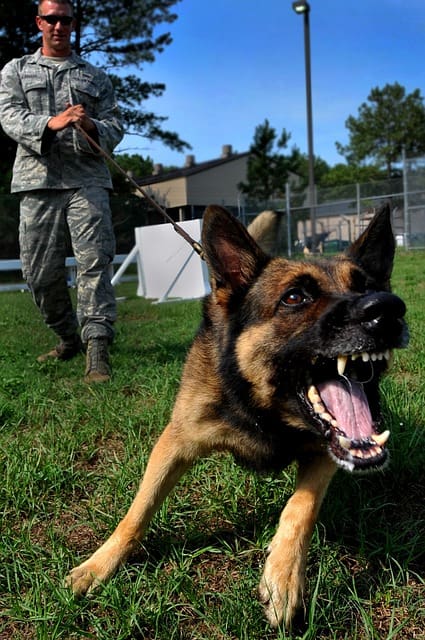

Using stimulating toys and challenging exercises during training sessions can help maintain their focus and prevent boredom.
Distractions
Mitigating distractions during training is a critical challenge for working dogs, necessitating techniques to enhance their focus, minimize external disruptions, and reinforce their concentration on assigned tasks.
Distractions like noises, smells, and unfamiliar surroundings can detract working dogs from their training objectives. To address this, trainers utilize focus enhancement strategies, including desensitization to environmental stimuli, systematic exposure to distractions, and positive reinforcement for maintaining attention.
Moreover, disruption minimization involves creating controlled training environments, using consistent routines, and gradually introducing new elements to avoid overwhelming the dogs. Concentration reinforcement methods, like mental stimulation exercises and establishing clear communication cues, further promote sustained attention during tasks.
Different Breeds Have Different Needs
Addressing the diverse needs of different dog breeds presents a notable challenge in training, requiring customized approaches to accommodate their distinct characteristics, behaviors, and learning styles.
Each breed possesses unique traits and tendencies, necessitating tailored training methods.
For example, highly energetic breeds such as Border Collies may require more physical activity and mental stimulation, while independent breeds like Siberian Huskies may need gentle persistence and patience.
Sensitive breeds such as Shih Tzus might respond better to positive reinforcement, whereas working breeds like German Shepherds thrive in tasks and obedience training.
Being adaptable in the training approach is crucial to address the individual needs of various breeds effectively.
Physical Limitations
Accommodating the potential physical limitations of working dogs during training poses a significant challenge, necessitating specialized techniques and adaptations to ensure their comfort, safety, and training efficacy.
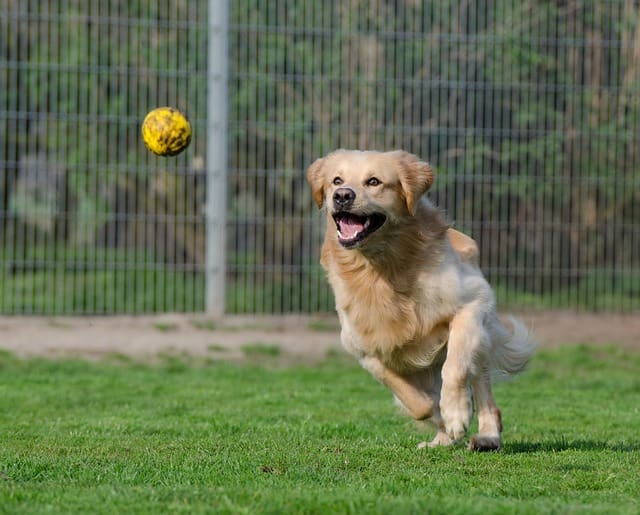

Understanding individual dogs’ unique needs and abilities is crucial in addressing their physical limitations. Tailoring training regimens to account for disabilities or physical constraints requires a thoughtful approach, often involving customized equipment and training aids.
Training environments must be carefully designed to minimize potential risks and consider the impact of the dog’s limitations on their performance. It’s also essential to continuously monitor and adjust training techniques to account for any changes in the dog’s physical condition over time.
Frequently Asked Questions
What is training for working dogs?
Training for working dogs is a specialized program designed to teach dogs specific tasks and skills that will enable them to perform duties in various fields, such as search and rescue, detection, and protection.
What are the benefits of training for working dogs?
Training for working dogs can provide a wide range of benefits, including improved obedience, increased physical and mental stimulation, and the development of specialized skills that can benefit both the dog and their human partners in various working environments.
What types of dogs are suitable for training for working dogs?
Many breeds and mixes can excel in training for working dogs, but some of the most commonly trained include German Shepherds, Labrador Retrievers, Belgian Malinois, and Golden Retrievers. Breeds with a strong desire to work and high levels of energy are typically the best candidates.
How long does training for working dogs typically take?
Training for working dogs can vary in length depending on the specific skills and tasks being taught. Basic obedience training can take a few weeks, while more advanced training for specific tasks and situations can take several months or even up to a year.
What does the training process for working dogs involve?
The training process for working dogs typically involves a combination of positive reinforcement, repetition, and gradual advancement in difficulty. Dogs are taught to focus on their handler, follow commands, and perform tasks with consistency and reliability.
Can any dog become a working dog through training?
While many dogs can benefit from training and excel in various tasks, not all dogs have the temperament, physical ability, or drive to become working dogs. It’s important to carefully assess a dog’s personality and capabilities before committing to training for working dogs.




Hello, My Dog-Loving Friends! I’m Jason Brown, a social media marketer for Dog Training Schools and a writer at BestDogTraining.com. My world is all about the joy and wisdom our four-legged friends bring. I love the exchange of learning with dogs; it’s not just my job. It’s my way of life.
My journey began at Ohio State with a degree in journalism, fueling my passion for storytelling. This passion comes alive in every post and article I write, whether about the latest dog training techniques or heartwarming canine tales.
When I’m not immersed in the world of dogs, you can find me surfing. There’s a thrilling similarity between the unpredictability of the ocean and working with animals – both are endlessly fascinating. I’m also an aspiring poet, although I embrace the more humorous side of my attempts at verse.
Traveling is another passion of mine. My wife, kids, and I explore new places, always accompanied by our Basset Hound, Snoopy. He’s more than a pet; he’s integral to our family adventures.
Through my work, hobbies, and travels, I’ve discovered that life’s most fulfilling experiences come from sharing moments with family, friends, and a loyal dog. Follow me for stories and tips from a life enriched by dogs, the ocean, and family adventures! 🐕🌊👨👩👧👦
Dog Grooming
What Sets a Dog Grooming Apron With Pockets Apart?
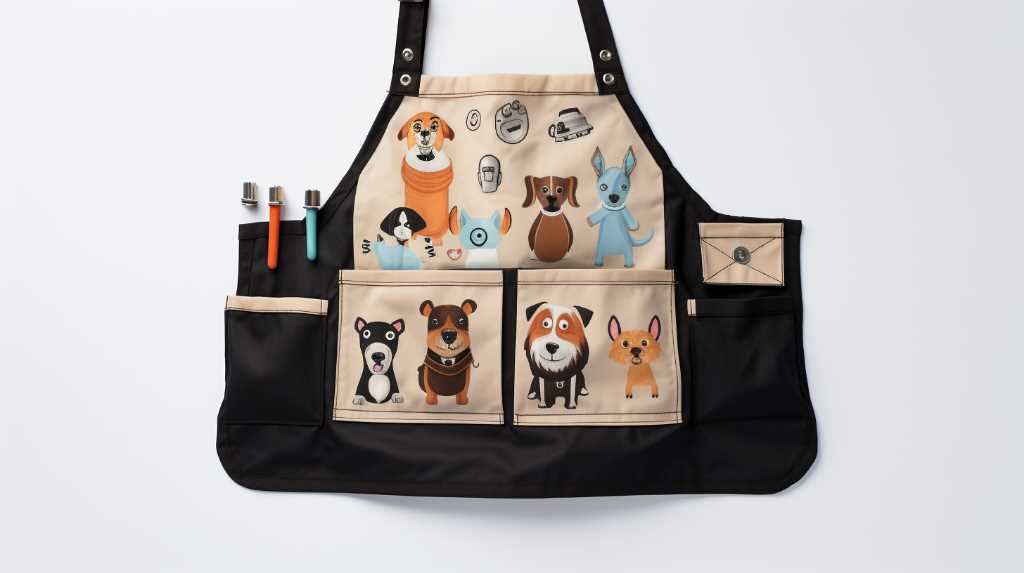

For dog groomers seeking a sense of freedom and practicality in their work, the choice of grooming apron holds significant importance. What sets a dog grooming apron with pockets apart lies in its ability to provide convenience and efficiency.
The inclusion of pockets offers the freedom to keep essential tools, treats, and accessories within reach, eliminating the need for constant back-and-forth movements. Furthermore, the durability and material of the apron are critical factors that ensure longevity and ease of maintenance.
Comfort and functionality are also paramount, allowing groomers to move freely and attend to their furry clients without hindrance. Professional groomers understand the value of a well-designed apron, making it an indispensable tool for their daily grooming routines.
Importance of Pockets in Grooming Aprons
The importance of pockets in grooming aprons lies in their ability to conveniently hold essential tools and supplies for efficient grooming procedures. Pockets organization is crucial for groomers who require quick access to items such as brushes, combs, scissors, and nail clippers.
Without proper apron storage solutions, groomers may find themselves fumbling for tools or having to carry them separately, leading to a less streamlined and more time-consuming grooming process. A well-designed grooming apron with strategically placed pockets ensures that everything a groomer needs is within easy reach, allowing for a smoother workflow and a more enjoyable grooming experience.
This level of organization and accessibility is essential for professionals who value freedom of movement and efficiency in their work.
Material and Durability: A Groomer’s Ally
A high-quality dog grooming apron with pockets is crafted from durable and water-resistant material, providing groomers with a reliable ally that withstands the rigors of daily use. The material selection is crucial in ensuring the longevity and functionality of the apron, making maintenance easier and more effective.


The following factors set such aprons apart:
- Water-Resistant Material: The apron’s ability to repel water ensures that grooming fluids and water don’t seep through, keeping the groomer dry and comfortable.
- Durable Construction: The use of tough, resilient materials ensures that the apron can withstand the demands of a busy grooming environment without tearing or wearing out quickly.
- Easy Maintenance: The selected material is easy to clean, allowing for quick and efficient apron maintenance, saving time and effort for the groomer.
Design and Comfort: Prioritizing the Groomer’s Need
Crafting a dog grooming apron with pockets that prioritize the groomer’s need for design and comfort requires attention to detail and a deep understanding of the demands of the grooming environment.
Design innovation plays a pivotal role in creating aprons that offer both style and functionality. The incorporation of ergonomic fit is essential in ensuring that groomers can move freely and comfortably during long hours of work.
The strategic placement of pockets and compartments should not only enhance the apron’s aesthetic appeal but also provide practicality, ensuring that essential tools are within easy reach. A well-designed apron should distribute weight evenly to prevent strain and fatigue.
The choice of materials and the breathability of the fabric are also crucial factors in enhancing overall comfort. Ultimately, a thoughtfully designed grooming apron can significantly elevate a groomer’s experience, allowing for greater freedom of movement and convenience.
Professional Groomers’ Insights on Apron Utility
Professional groomers emphasize the practicality and functionality of apron pockets in their daily grooming routines. From a groomer’s perspective, apron organization plays a crucial role in enhancing efficiency and productivity. Here are insights from professional groomers on apron utility:
- Tool Accessibility: Groomers rely on apron pockets to keep essential tools such as scissors, brushes, and combs within easy reach, allowing for seamless grooming without interruptions.
- Treat Storage: Apron pockets provide a convenient space for storing treats, enabling groomers to reward good behavior during grooming sessions without having to step away to retrieve treats.
- Mobile Phone Holder: Many groomers appreciate aprons with pockets designed to securely hold their mobile phones, ensuring they can stay connected and accessible while working hands-free.
These insights underscore the significance of well-organized apron pockets in the grooming profession.
Style Meets Function: Choosing Your Apron
When choosing a dog grooming apron with pockets, it is essential to consider both style and functionality to ensure a professional and efficient grooming experience.


The style of the apron should not only reflect your personal taste but also exude professionalism. Opt for aprons that come in various colors and designs, allowing you to express your individuality while maintaining a polished look.
Practicality and comfort are equally important. Look for aprons made from durable, waterproof materials that are easy to clean, ensuring they can withstand the demands of the grooming environment. Additionally, adjustable neck and waist straps provide a comfortable fit for extended wear.
Frequently Asked Questions
Can a Grooming Apron With Pockets Help Prevent Hair and Debris From Getting on My Clothes?
A grooming apron with pockets provides effective prevention of hair and debris from soiling clothes. It offers storage solutions for tools and accessories, aiding in organization and efficiency during grooming sessions.
Are There Specific Types of Tools or Products That Can Be Easily Stored in the Pockets of a Grooming Apron?
Storage solutions in a grooming apron enable easy access to essential grooming tools and products. These pockets provide apron organization, ensuring quick retrieval of items while maintaining cleanliness. Additionally, they offer added hair protection, keeping debris away from clothing and promoting a cleaner grooming environment.
How Do the Pockets on a Grooming Apron Help With Organization During the Grooming Process?
In the grooming process, the pockets on a grooming apron enhance organization efficiency by providing convenient storage for essential tools. The apron’s design ensures quick access to grooming tools, promoting a seamless and focused grooming experience.
Are There Any Special Features or Considerations to Keep in Mind When Choosing a Grooming Apron With Pockets?
When choosing a grooming apron with pockets, consider the durability and comfort it offers. Look for aprons made from water-resistant, easy-to-clean materials. Sizing is crucial for a good fit, ensuring ease of movement during grooming sessions.


What Are Some Creative Ways That Groomers Utilize the Pockets on Their Aprons During a Grooming Session?
Apron organization and creative tools play a crucial role in grooming efficiency. Groomers utilize apron pockets for quick access to scissors, brushes, and treats, enhancing their ability to multitask and provide smooth, uninterrupted grooming sessions for pets.


Hello, My Dog-Loving Friends! I’m Jason Brown, a social media marketer for Dog Training Schools and a writer at BestDogTraining.com. My world is all about the joy and wisdom our four-legged friends bring. I love the exchange of learning with dogs; it’s not just my job. It’s my way of life.
My journey began at Ohio State with a degree in journalism, fueling my passion for storytelling. This passion comes alive in every post and article I write, whether about the latest dog training techniques or heartwarming canine tales.
When I’m not immersed in the world of dogs, you can find me surfing. There’s a thrilling similarity between the unpredictability of the ocean and working with animals – both are endlessly fascinating. I’m also an aspiring poet, although I embrace the more humorous side of my attempts at verse.
Traveling is another passion of mine. My wife, kids, and I explore new places, always accompanied by our Basset Hound, Snoopy. He’s more than a pet; he’s integral to our family adventures.
Through my work, hobbies, and travels, I’ve discovered that life’s most fulfilling experiences come from sharing moments with family, friends, and a loyal dog. Follow me for stories and tips from a life enriched by dogs, the ocean, and family adventures! 🐕🌊👨👩👧👦
-



 Dog Grooming1 year ago
Dog Grooming1 year ago7 Essential Tips for Dog Grooming: From Coat Length to Cooling Down Period
-



 Dog Breeds1 year ago
Dog Breeds1 year agoIs There a Real Connection Between Dog Breeds and Their Inherent Aggressiveness?
-



 Videos1 year ago
Videos1 year agoDog Training 101: How to Train ANY DOG the Basics
-



 Dog Adoption1 year ago
Dog Adoption1 year agoWhy Should You Consider Bringing Home a Senior Dog?
-



 Dog Adoption1 year ago
Dog Adoption1 year agoWhat Are the Considerations Before Adopting a Special Needs Dog?
-



 Dog Adoption1 year ago
Dog Adoption1 year agoWhat Crucial Elements Should I Consider in a Dog Adoption Contract?
-

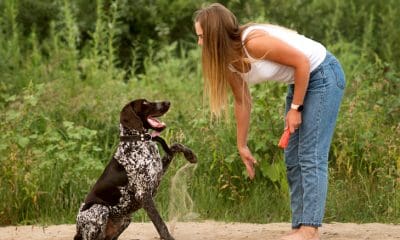

 Dog Training1 year ago
Dog Training1 year agoUnleash Your Pooch’s Potential: Mastering the Art of Fetch
-



 Dog Adoption1 year ago
Dog Adoption1 year agoMaking Your Home a Haven for Your New Dog}












